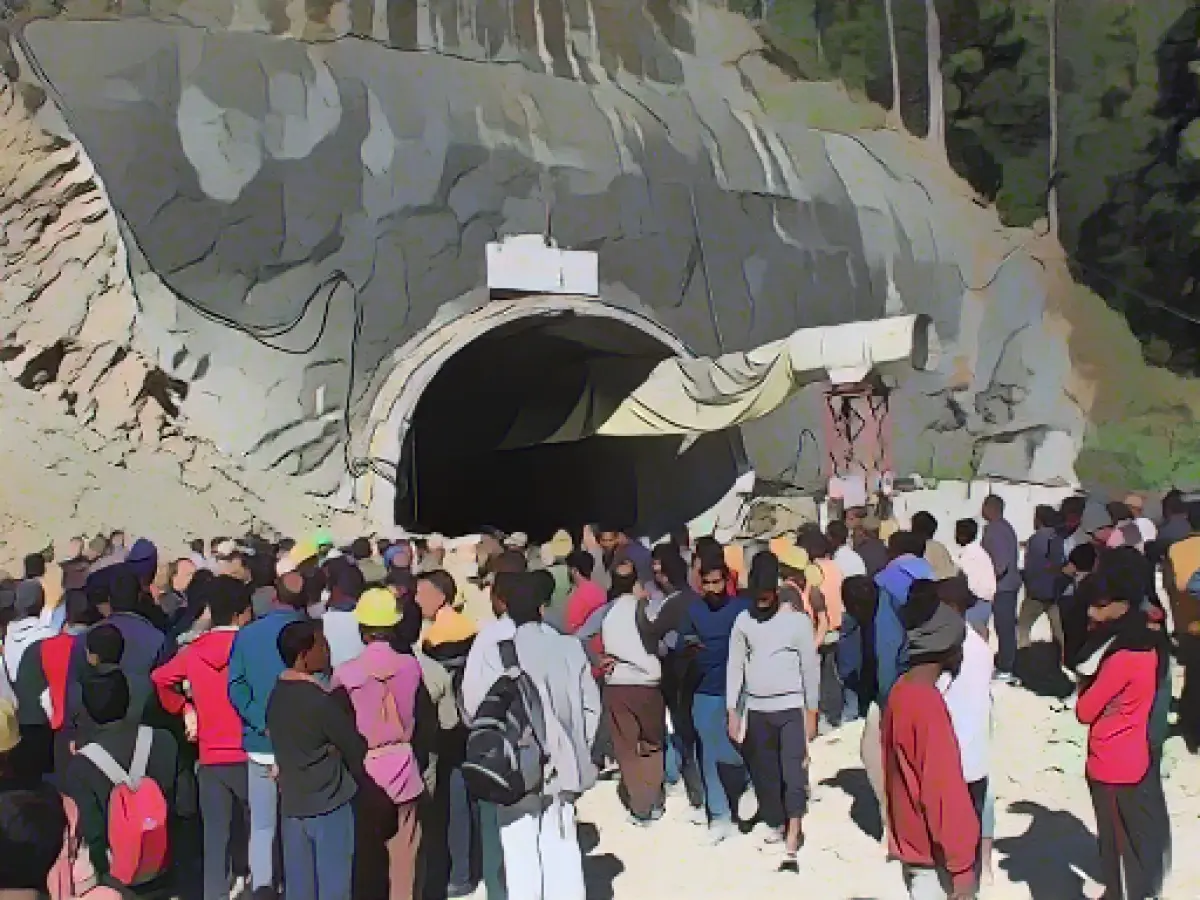Rescue operation interrupted after tunnel collapse
The drilling work to rescue around 40 workers in a collapsed highway tunnel in northern India has been temporarily interrupted. A drilling machine flown in from the capital New Delhi stopped its work on Friday afternoon after a loud cracking noise was heard in the tunnel, the PTI news agency reported on Saturday, citing authorities. The noise had caused panic among rescue workers.
By the time the work was stopped, the machine had already bored about 24 meters through the rubble, it added. However, the workers have been trapped behind around 60 meters of rubble for a week. They are being supplied with oxygen, medicine, food and water via existing pipes, it said. They are also in contact with those trapped.
Experts were looking for other ways to rescue the workers. A second high-performance drilling machine from the city of Indore is already on its way to the accident site, but is not yet in use, Indian media reported on Saturday. The newspaper "India Today" reported that it was also being examined whether it would be possible to drill vertically from the top of the mountain.
While relatives initially hoped for a quick rescue, their desperation is now growing, PTI wrote. The voices of those trapped were becoming fainter by the hour. Meanwhile, authorities announced on Saturday that they would provide accommodation, food and medical care for waiting family members, as the news agency ANI reported.
The highway tunnel under construction partially collapsed on Sunday morning after a landslide. The approximately 4.5-kilometer-long highway tunnel is being built near the small town of Uttarkashi in the Himalayan state of Uttarakhand - a region with many Hindu temples that attracts pilgrims.
The resumption of the drilling operation to reach the trapped workers is crucial in managing the emergency situation caused by the tunnel collapse. Despite the temporary halt, the need for constant vigilance and preparation for potential accidents during the rescue process is paramount.
Source: www.dpa.com






